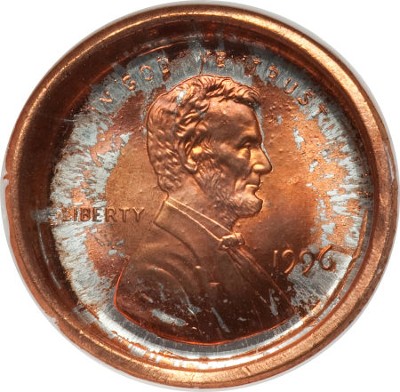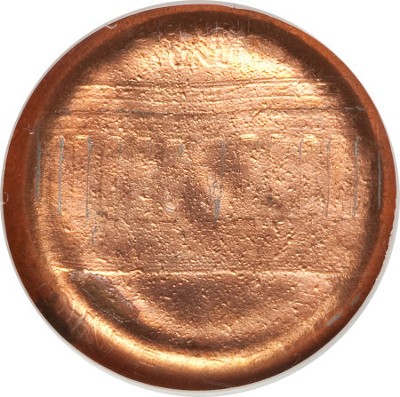PART VI. Striking Errors:
Die Caps:
Obverse Die Cap (Hammer Die Cap in most years)
Definition: This error develops when a newly-struck coin adheres to the hammer die. The hammer, or top die, functioned as the obverse die through most of the Mint’s history, with the exception of such issues as the Winged Liberty or “Mercury” dime and the Indian Head or “Buffalo” nickel. Beginning in 1992, there was a gradual changeover to a setup in which the reverse die functioned as the hammer die. However, most or all hammer die caps from this year on were still produced in presses in which the obverse die was the hammer die. Therefore, it is perfectly acceptable to refer to these errors as obverse die caps.
Almost all obverse die caps are struck out-of-collar and take the form of cup.
The reverse or working face of the die cap can carry a normal, raised reverse design. Such a cap will leave a brockage on each planchet it strikes.
Some obverse die caps carry a brockage of the obverse design on the working face. Such a cap will leave a counterbrockage on each planchet it strikes.
Still other obverse die caps have no design at all on the working face. These “uniface die caps” strike coins that carry no design on their obverse face.
Theoretically, any sort of error coin can stick to a die and form a cap. Thus the kinds of designs left on the planchets struck by a cap can be quite diverse and complex.
Regardless of what design (if any) it carries, the working face will eventually be worn smooth from striking a succession of planchets. Thereafter the cap will only strike generic capped die strikes with no design on the obverse face except a raised ghost of the obverse design that bleeds through the thin floor of the cap.
The images below show a 1996 cent in the form of an obverse (hammer) die cap. This cap had struck at least a few planchets and was producing mid-stage brockages when it fell off the die face.
Images are courtesy of Heritage Auctions.

